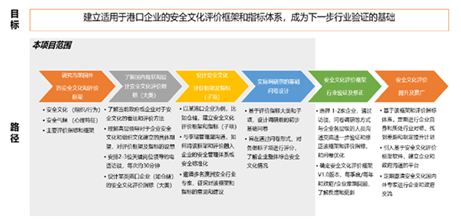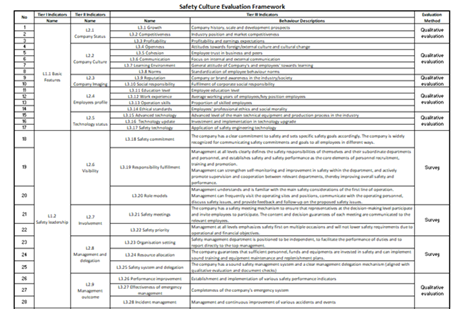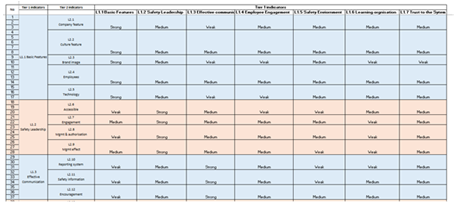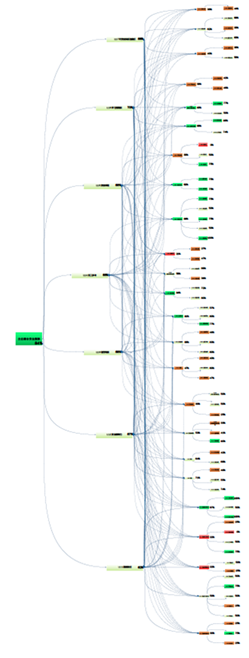Case Study: Ignite China opportunities, uplift the value of knowledge from Australia
The following is a project that demonstrates our ability to uncover and uplift the value of knowledge sourcing from Australian industry experts.
From time to time, we host Chinese business delegates to meet with our Australian partner organisations at Melbourne to discuss topics in common interest. During one of those sessions, management from a Chinese transport safety evaluation firm raised an argument that safety culture played a critical role in ensuring a safety track record and seek Australian experts’ input. Indeed, many Australian industry experts shared the same view, and some of them have used creative ways to validate the cultural impacts in their past assignments. On this topic, the in-depth discussion impressed the Chinese visitors.
Shortly after the delegations returned, we were contacted by the Chinese firm that it had won the support from Ministry of Transport (MoT) to evaluate and improve organisational safety culture at the port industry by leveraging existing best practices globally. We worked together to decide on a two-phase approach (Exhibit 1). Firstly, we will assess the safety culture maturity levels of enterprises that manage Chinese seaports. Then we aim to establish a Chinese benchmark system, by which to encourage enterprises to measure and improve their safety culture. The firm has support from one of the world’s largest ports to run a pilot so that the evaluation method can be validated, refined and rolled out to similar organisations. What the firm needs from us are to tap into the existing knowledge of Australian industry experts to build up a ready-to-use evaluation toolkit before starting the pilot within a few months.
The project is subject to a deadline to start the first pilot. We quickly got it started, but soon faced a challenge. Several evaluation standards we are referencing all have limitations in practical applications. They lacked detailed examples and supporting materials while serving more like general guidelines. To fill the gap, we called for help from the industry experts who had significant Australian and Chinese experience. None of them had intentionally collected or summarised safety culture evaluation experience because their focus was more on the technical aspects. But thankfully, they were willing to openly share with us their expertise, allowing us to collect, organise and summarise their knowledge into reusable materials. Many experts offered help to review the content we were creating.
We started with a detailed analysis of an existing China national standard, designed and agreed with the Chinese stakeholders a high-level evaluation methodology to stay compliant with Chinese standard. The methodology encompasses objective research methods (through unbiased employee surveys) and subjective research methods (through on-site reviews performed by auditors).
We combined the methodology with evaluation criteria distilled from international standards as our guiding framework (Exhibit 2), using which to collect and document the knowledge from Australian industry experts. Doing so, we effectively summarised and enhanced their experience into ready to be used evaluation questionnaires, criteria and scoring mechanisms.
We further enhanced the evaluation materials by adding cross-validation, anti-bias features through consultation with experts in the fields of human factor research, psychology, and data science (Exhibit 3). We also adopted a nonlinear algorithm from the machine learning field to calculate an overall safety culture index value based on the outcome of both the objective and subjective researches (Exhibit 4).
Finally, we organised remote workshops with our Chinese industry experts and stakeholders to make adaption and localisation of the evaluation material (not as simple as the translation from English to Chinese), so that the contents were ready to be consumed at the pilot project. In the future, we are going to support the pilot projects together with our Chinese client and Australian industry experts, improving the knowledge base we helped develop. All in all, we proved that there is good value lies in knowledge among Australian industry experts that many Chinese firms want to tap into. Uncovering those, we can help uplift the value, so to ignite the China opportunities. In this case, the Chinese firm fully funded the project. Likewise, we are looking forward to proactively working with more Australian firms to expand their know-how into the Chinese market to generate higher commercial value.


7 Tier I indicators, 24 Tier II indicators, 65 Tier III indicators (to include both qualitative and quantitative measurements)

Correlations among indicators are identified and fed into the mathematical model for the safety culture index calculations

Combining the outcome of the objective and subjective researches using Sigmoid function (shown in the diagram also)